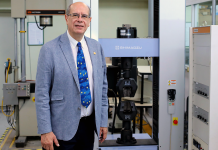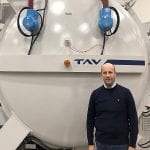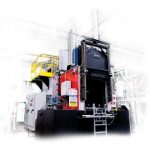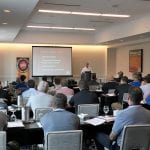Q&A with Mike Paponetti
Hardness scale conversion
IHEA offers hands-on training in Atlanta
Variation in steel hardenability
Q&A with Guido Locatelli
Allocating space for case hardening furnaces
An argument in support of Nadcap
Q&A with Max Dubin
Hardening depth measurement
Let’s hear it for welding
ITPS delivers outstanding presentations to industry executives
Keep wet pumps performing
AMS2750E, Nadcap requirements
Q&A with Raymond Daniel Noble
The metallurgical R&D laboratory
Remembering old-school lab work is a blast from the past
Is there a furnace problem?
That question is much easier to answer if you learn the indicators, alarms, switches
IHEA conducts technical seminars in conjunction with Furnaces North America
IHEA conducts technical seminars in conjunction with Furnaces North America
You can’t overlook the process
Cycle verification identifies thermal nonconformance, ensures deviation from requirements is reported
Residual stress evaluation in bearings
Lingering stress is not easily identified during production, but has a direct impact on wear performance and fatigue life
Q&A with Bob Fouquette
Chief Engineer with Custom Electric Manufacturing Co.
Atmosphere furnace control
Proper temperature is crucial to part quality, but don’t overlook its effect on atmosphere control
Carbon potential verification
Choose from several verification methods for best fit, then develop a plan to correct for out-of-spec test results
Q&A with Richard Slattery
Vice President, Engineering with Capstan Atlantic
Heat treating is not for the faint of heart
Why heat-treating furnaces look the way they do, Part 2
Maximize downtime for large repairs
When your furnace is down for large repairs, use the opportunity to catch up on overdue or extensive maintenance
Q&A with Joe Ugalde
Business Marketing Analyst with TE Wire & Cable, LLC
Finding leaks in an atmosphere furnace
Visual inspection, routine preventative maintenance of atmosphere furnaces is critical to maintaining safety, efficiency
Case Depth Determination
Methodology to ensure design intent is satisfied
Some things old can be new again
Why heat-treating furnaces look the way they do
Understanding gas composition
Evaluating furnace atmospheres for proper gas composition is the key to desired performance results
Distortion during heating
Minimizing distortion involves more than just optimizing cooling
Q&A with Rick Diekman
Owner and President of Controlled Thermal Processing, Inc.
Carbon: Essential element or too much of a good thing
52100: Simple, yet it embraces carbon’s two-way benefit to steel
Handling temperature variations
Four essential maintenance steps for preserving temperature uniformity in your atmosphere furnace
Q&A with David Strand
President and CEO, Wisconsin Oven Corporation and Thermal Product Solutions
AMS2750E as it applies to Nadcap
Thorough knowledge of AMS2750E will speed implementation of new standard as it applies to NADCAP requirements















































